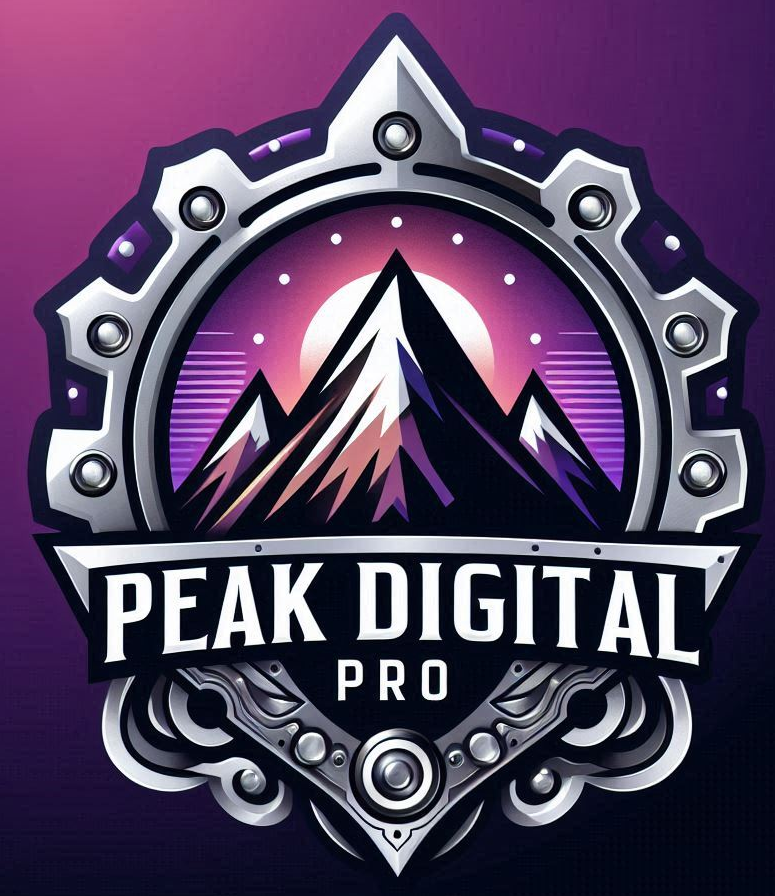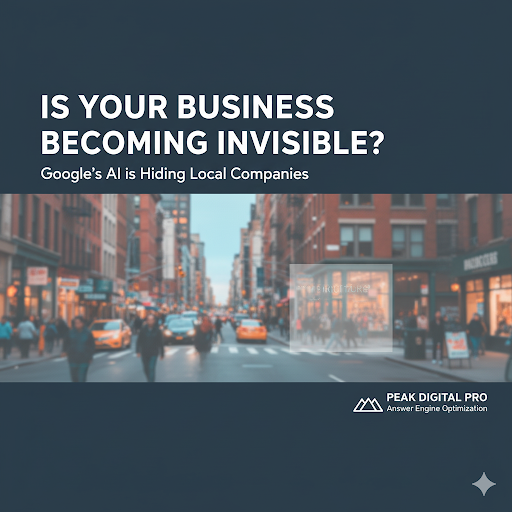Why Update Business Website: A Deep Dive Into Its Importance
A business website is more than a digital storefront or modern-day calling card. Nearly 90 percent of consumers form their first impression of a company based on its website alone. It sounds like just having an online presence should do the trick but most businesses barely scratch the surface of what’s possible. The real advantage comes when your website acts as a living, evolving hub that adapts to new tech and shifting customer expectations—transforming clicks into meaningful connections.
Table of Contents
Quick Summary
| Takeaway | Explanation |
|---|---|
| Your website is a digital storefront. | It serves as a primary platform for customer interaction, crucial for establishing impressions and credibility. |
| Embrace technology for competitive advantage. | Use responsive design and AI to create personalized, engaging user experiences on your website. |
| Optimize for SEO and user experience. | Ensure fast loading times and mobile responsiveness to enhance visibility and engagement with your audience. |
| Regularly update content to build trust. | Frequent updates and high-quality content reinforce credibility and keep users engaged with your brand. |
| Adapt to changing consumer behavior. | Continuously revise strategies to meet evolving digital trends and consumer demands for innovation and transparency. |
Understanding the Role of Your Website in Business
In the digital age, a business website serves far more than a simple online brochure. It functions as a comprehensive digital storefront, brand ambassador, and critical communication platform that connects organizations directly with their target audiences. Learn more about our approach to digital business presence.
The Digital Gateway for Customer Interaction
Your website represents the primary touchpoint where potential customers form their initial impressions about your business. According to the Better Business Bureau , a modern website plays a crucial role in establishing business credibility and expanding organizational reach.
Key functions of an effective business website include:
- Providing comprehensive information about products and services
- Establishing brand identity and professional credibility
- Facilitating direct customer engagement and communication
Beyond Basic Information: Strategic Business Asset
Modern websites transcend traditional informational roles. They are strategic tools that actively drive business growth by:
- Generating qualified leads through targeted content
- Supporting marketing and sales initiatives
- Enabling data collection for customer insights
Businesses that view their websites as dynamic, evolving platforms rather than static information repositories gain significant competitive advantages. The user experience and strategic design of your digital presence directly impact customer perception, engagement, and ultimately, conversion rates.
With search engines and AI technologies continuously transforming how customers discover and interact with businesses, maintaining an updated, responsive, and strategically optimized website is no longer optional—it is a fundamental requirement for sustainable business success.
The Impact of Technology and Design Trends
Technology and design trends are rapidly transforming how businesses communicate and engage with their audiences online. Check out our guide on understanding modern website design principles.
Responsive Design and User Experience
Modern websites must adapt seamlessly across multiple devices and screen sizes. According to Tufts University , web design now encompasses more than aesthetic appeal—it represents a critical intersection of accessibility, functionality, and user engagement.
Key technological considerations include:
- Mobile-first design strategies
- Adaptive interface technologies
- Performance optimization for varied network conditions
AI and Emerging Digital Interfaces
Artificial intelligence is revolutionizing website interactions, creating more personalized and intelligent digital experiences. Emerging trends demonstrate how websites are becoming dynamic, intelligent platforms that can:
- Predict user preferences
- Provide real-time personalization
- Automate complex interaction pathways
Businesses that embrace these technological shifts gain substantial competitive advantages. Intelligent design now means creating websites that are not just visually appealing, but strategically engineered to understand and anticipate user needs.
The convergence of design, technology, and user experience represents a profound shift in digital communication.
The following table compares key technological and design trends shaping modern business websites and highlights their impact on user experience and business outcomes.
| Trend | Description | Impact on Business Website |
|---|---|---|
| Responsive Design | Website adapts to various devices and screen sizes | Ensures accessibility and consistent experience |
| Mobile-First Strategy | Prioritizes mobile usability and performance | Captures growing mobile audience |
| Performance Optimization | Enhances loading speed and resource efficiency | Reduces bounce rates, improves SEO rankings |
| AI-Powered Personalization | Uses artificial intelligence for tailored experiences | Boosts engagement and conversion rates |
| Real-Time Content Updates | Updates information dynamically and frequently | Increases user trust and relevance |
| Accessibility Features | Incorporates tools for users with disabilities | Expands reach and compliance |
Websites are no longer static information repositories but living, adaptive ecosystems that reflect a brand’s commitment to innovation and customer-centric engagement.
SEO and User Experience: Key Drivers for Updates
Search engine optimization and user experience are interconnected strategies that fundamentally shape a business website’s digital performance. Discover our comprehensive guide on website user experience for business owners.
The Symbiotic Relationship Between SEO and User Experience
Search engines like Google continuously evolve their algorithms to prioritize websites that deliver exceptional user experiences. According to Search Engine Optimization research from Cornell University , technical optimizations such as fast loading times, robust security, and mobile-friendliness are crucial for improved search rankings and user engagement.
Key SEO and user experience intersections include:
- Content relevance and quality
- Page loading speed
- Mobile responsiveness
- Intuitive navigation structures
Performance Metrics That Drive Digital Success
Modern websites must balance technical performance with compelling content. Successful digital platforms understand that search engine visibility is directly tied to how users interact with and perceive their online presence.
Critical performance indicators businesses should monitor:

- Bounce rates
- Time spent on page
- Conversion rates
- Organic search rankings
By continuously refining website design, content strategy, and technical infrastructure, businesses can create digital experiences that not only attract search engine algorithms but also genuinely engage and convert their target audiences.
This table outlines the key performance metrics businesses should monitor to evaluate and enhance their website’s digital success.
| Metric | What It Measures | Why It Matters |
|---|---|---|
| Bounce Rate | Percentage of users who exit after one page | Indicates content or user experience issues |
| Time on Page | Average time visitors spend per page | Reflects engagement and content value |
| Conversion Rate | Percentage of visitors taking desired action | Measures effectiveness in achieving goals |
| Organic Search Ranking | Website’s position in search results | Affects visibility and qualified traffic |
Maintaining Trust and Credibility in Your Brand
In the digital landscape, a business website serves as the primary platform for establishing and reinforcing brand reputation. Learn more about digital branding strategies for business owners.
The Visual and Content Foundations of Trust
Visual design and content quality are critical determinants of online credibility. According to research from the Education Resources Information Center , frequent updates and relevant information are essential for maintaining user trust across digital platforms.
Key elements that signal professional credibility include:
- High-quality, professionally designed graphics
- Clear, error-free written content
- Updated copyright dates and recent publication timestamps
- Transparent contact and business information
Beyond Aesthetics: Building Authentic Digital Relationships
Credibility is not merely about appearance but about demonstrating genuine value and reliability. Authentic digital communication requires consistent messaging, transparent practices, and proactive engagement with audience expectations.
Strategic trust-building components include:
- Showcasing verified customer testimonials
- Displaying current professional certifications
- Providing detailed, accurate service descriptions
- Maintaining an updated blog or news section
Businesses that invest in their digital presence as a dynamic, evolving platform create stronger connections with their audiences. By regularly updating content, design, and functional elements, organizations signal their commitment to excellence and ongoing innovation.

Responding to Market Changes and Consumer Behavior
The digital landscape continuously evolves, demanding businesses remain agile and responsive to emerging consumer trends and technological shifts. Learn more about increasing online visibility for businesses.
Understanding Digital Consumer Dynamics
Consumer behavior has fundamentally transformed with technological advancements. According to research from Virginia Tech , the internet has dramatically reduced search costs and expanded consumer alternatives, requiring businesses to adapt their digital strategies rapidly.
Key shifts in consumer digital interactions include:
- Increased reliance on mobile browsing
- Preference for personalized digital experiences
- Demand for immediate, accessible information
- Greater emphasis on digital trust and transparency
Strategic Adaptation in the Digital Marketplace
Successful businesses recognize that website updates are not cosmetic choices but strategic imperatives. Digital platforms must dynamically reflect changing consumer expectations, technological capabilities, and market conditions.
Critical areas of digital responsiveness involve:
- Real-time content updates
- Adaptive design across multiple devices
- Integration of emerging technologies
- Continuous performance optimization
Businesses that view their websites as living, breathing ecosystems rather than static digital brochures will effectively navigate the complex and rapidly changing digital marketplace. Proactive adaptation becomes the cornerstone of sustained digital relevance and competitive advantage.
Ready to Secure Your Business in the Age of AI Search?
Your business website can no longer rely on old content and outdated design. As highlighted in our deep dive, companies are losing visibility and customer trust to competitors who adapt fast. If you’ve noticed your website slipping in search rankings or struggling to reach customers in AI-powered results, you’re not alone. Modern websites must not only look credible but also meet the demands of AI-driven search engines. The risk is real: dropping behind in digital relevance means losing qualified leads and shrinking your reach, especially for industries where every click counts.

Take action now to protect your visibility and attract modern customers. Discover how Peak Digital Pro
helps growth-focused businesses thrive with our proven AEO Method . We specialize in website effectiveness and visibility strategies, and our commitment to only one client per industry in each market ensures your competitive advantage. Do not wait for the next algorithm shift to erode your market share. Partner with our team today and stay ahead where it matters most.
. We specialize in website effectiveness and visibility strategies, and our commitment to only one client per industry in each market ensures your competitive advantage. Do not wait for the next algorithm shift to erode your market share. Partner with our team today and stay ahead where it matters most.
Frequently Asked Questions
Why is it important to update my business website?
Updating your business website is crucial as it ensures that you maintain credibility, engage your audience effectively, and adapt to technological changes and market trends. A modern website helps generate leads, supports your marketing efforts, and enhances user experience.
How does website design impact my business’s online presence?
Website design plays a significant role in shaping customer perception. An effective design enhances user experience, establishes your brand identity, and ensures that visitors can easily access information, driving engagement and conversion rates.
What role does SEO play in maintaining my business website?
Search engine optimization (SEO) is vital for improving your website’s visibility in search engine results. Effective SEO strategies enhance user experience through relevant content, fast loading times, and mobile responsiveness, ultimately driving more qualified traffic to your site.
How can I keep my website content fresh and relevant?
To keep your website content fresh and relevant, regularly update your blog or news section, incorporate new product information, refresh existing pages with updated visuals and details, and monitor industry trends to ensure your content meets current consumer expectations.
Recommended
- Small Business Website Effectiveness and the Impact of AI Search Implementations
- Website Migration SEO Tips for Business Owners
- Understanding Website Design Principles for Business Owners
- Website User Experience: A 2025 Guide for Business Owners
- Effective Website Design: Key Principles and Proven Strategies 2025







